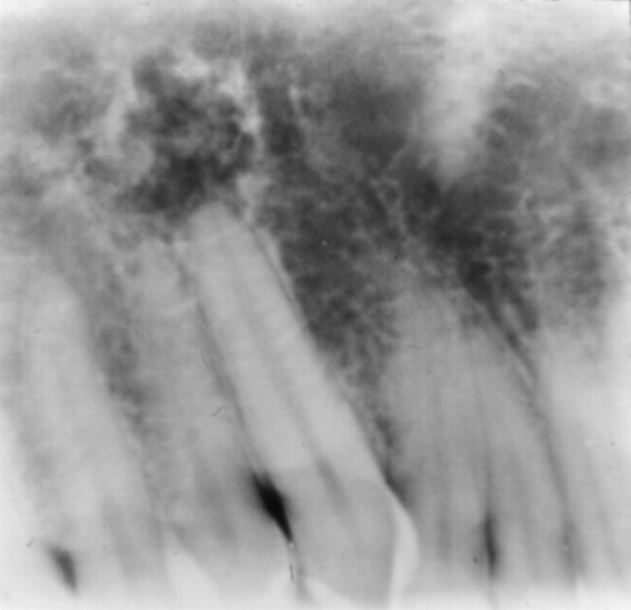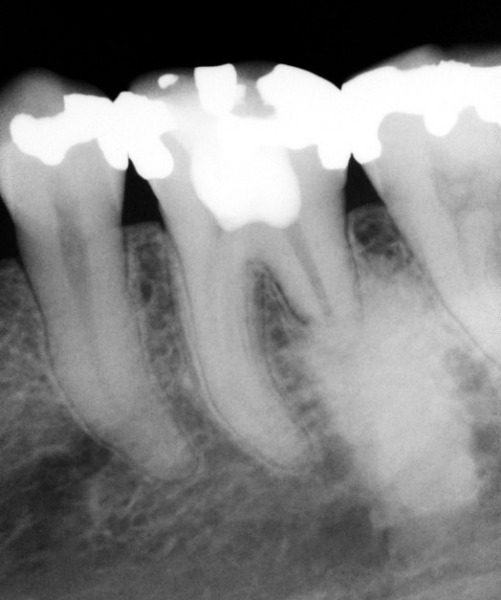Tumors - Radiopaque




Ameloblastoma is the most common of the odontogenic tumours, but represents only 1 per cent of all tumours in the oral region. A unicystic variation of ameloblastoma can be difficult to differentiate from an odontogenic cyst without histological investigation.
Of the cementomas, the benign cementoblastoma (true cementoma) can look like condensing apical periodontitis, particularly in its early stage (picture in main window, left). Later, the size and radiographic appearance of a benign cementoblastoma make differentiation easier. Cementifying fibroma and periapical cemental dysplasia, on the other hand, may look similar to normal apical periodontitis in their early stage of development. Differential diagnosis is, however, very important because only apical periodontitis requires root canal therapy.
Central giant cell granuloma and its rare, more aggressive type, giant cell tumour, are characterised by large numbers of osteoclast-like giant cells and a vascular stroma. They cannot be radiographically differentiated, with certainty, from ameloblastoma, keratocyst, haemangioma, or aneurysmal bone cyst. Central giant cell granuloma may also be diagnosed as apical periodontitis. It may be symptom-free or symptomatic, and may or may not cause swelling of bone, and displacement or resorption of roots. Although the root canal is not aetiologically involved, endodontic therapy may be needed because of the surgical operation or root resorption.
Haemangioma is a rare, but diagnostically important tumour of the jaws. Surgical intervention or extraction of a tooth surrounded by a haemangioma, without careful assessment and planning, may cause fatal bleeding.
Metastatic tumours account for approximately 1 per cent of all malignant tumours in the oral region. They originate from various organs, but breast, lung and kidney are the most common. Osteolytic lesions located at the apical region can be misinterpreted as endodontic infections. Some metastatic lesions can be osteoblastic and cause increased radiopacity.